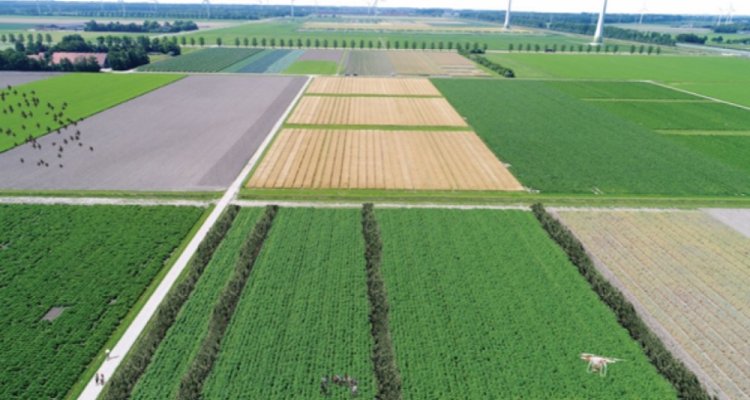
News
WUR launches first large-scale research facility for agroforestry in the Netherlands in Lelystad
The large-scale 15-hectare multidisciplinary research facility for agroforestry in Lelystad is the first of its kind in the Netherlands. It concerns a form of mixed cultivation in which trees and arable as well as horticultural crops are grown on the same plot. In Lelystad, various species of trees are planted in hedges, in combination with annual crops such as potatoes, grains and cabbage which are grown according to an annual crop rotation scheme. The research facility is part of the Field Crops business unit. Farm of the Future, a project with which the facility enjoys close collaboration, is also housed here. The first trees were planted today.
The agroforestry experiment meets the objectives of PPS Agroforestry, a four-year research programme in which WUR, in conjunction with farmers and the business community, explores opportunities for agroforestry in the Netherlands in the following areas:
- Soil fertility
- CO2 capture in the soil
- Biodiversity
- Shade for field crops in times of extreme aridity
- Attractive landscape
- Management of pests and diseases
- Extra income for farmers derived from nuts, fruit and wood
Farmers closely involved
The new research facility enables researchers with various specialist backgrounds to conduct research into the applicability of agroforestry in the Netherlands. Agroforestry farmers will be closely involved in the research. The aim is to find answers to questions such as: How do arboricultural crops interact with arable crops? What are the microclimatic effects produced by hedgerows in an open polder landscape? What are the effects on biodiversity and the soil? What are the economic perspectives for tree crops (hazels, in this case) in an arable farming system?
Hazel hedgerows
The experiment is an exercise in spacing: several rows of trees are planted at diverse distances from one another. Initially, biodiverse hedgerows will be planted, consisting of fast-growing tree species (black poplar, black alder, European white elm and white willow). Next year, a second row of trees consisting exclusively of hazels will be planted directly adjacent to the hedgerows. Once the hazel hedge is fully grown after a number of years, the hedge plants will be successively removed and only the hazels will remain. In other words: a step-by-step transition will be made from a biodiverse hedgerow to a row of nut bushes. This approach is advantageous because the nut bushes will be better sheltered during their development phase, and the fast-growing hedgerow will already provide research data during the first few years.
Research options
The agroforestry long-term research facility lends itself to multi-year research on numerous additional topics, such as resilience and adaptability to extreme weather conditions, carbon sequestration and effects on disease and pest control. The facility will be equipped with sensors to collect data with regard to climate (and micro-climate), wind (and wind speed) and soil conditions (temperature and moisture).